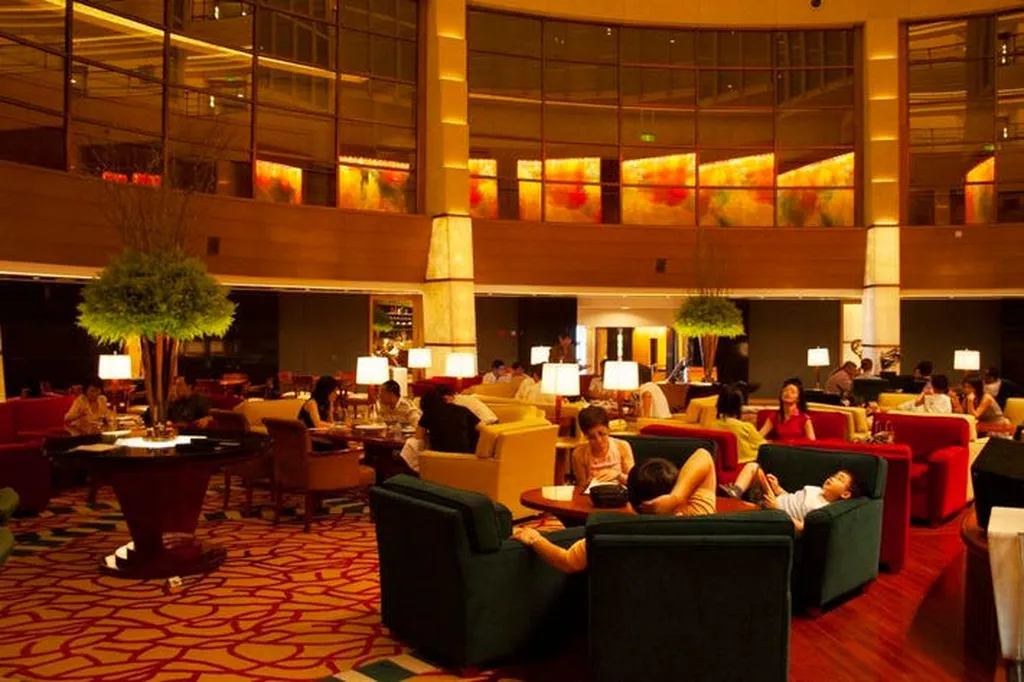In the world of cruise ships, the atrium is often the heart of the vessel, a large, open space where passengers gather, dine, and enjoy the view. But maintaining a comfortable temperature in these sprawling areas can be a challenge, especially in the summer months. That’s where the work of Di Li, a researcher from the College of Ocean Science & Engineering at Shanghai Maritime University, comes in. Li and his team have been working on optimizing the thermal environment in cruise ship atriums, and their findings, published in the journal ‘Energies’ (which translates to ‘Energies’ in English), could have significant implications for the maritime industry.
So, what’s the big deal about atrium temperature, you ask? Well, it’s not just about comfort. A well-regulated thermal environment can also improve the efficiency of the ship’s heating, ventilation, and air conditioning (HVAC) systems, leading to energy savings and reduced operational costs. Plus, happy passengers are more likely to leave positive reviews and become repeat customers, so it’s a win-win all around.
Li and his team used a combination of experimental measurements, thermal load analysis, and computational fluid dynamics (CFD) simulation to assess and improve the summer thermal climate in a typical cruise ship atrium. They found that the Renormalisation Group (RNG) k-ε turbulence model was the most accurate for predicting airflow and temperature in these spaces.
To meet the cooling demand of around 28,784 watts, the team calculated that a supply air volume of 10,742 cubic meters per hour was required. But it’s not just about the volume of air; the way it’s distributed can make a big difference to passenger comfort. Li and his colleagues evaluated various air-supply methods, looking at factors like temperature distribution, airflow velocity, Predicted Mean Vote (PMV), and air age.
They found that larger diffusers and better air dispersion led to more homogeneous temperatures, improved air age, and increased comfort. “Larger diffuser areas and equilibrated airflow maintained a temperature of 21–23 degrees Celsius, a PMV of −0.1 to 0.1, an air velocity of 0–0.3 meters per second, and an average air age of 350 seconds,” Li explained.
But it’s not always as simple as just increasing the size of the diffusers. The team found that redistributing airflow to corridors reduced localized overheating but raised core temperatures. Meanwhile, adding diffusers without boosting the supply volume caused interference.
So, what does this mean for the maritime industry? Well, for one thing, it provides a roadmap for designing more energy-efficient HVAC systems in cruise ship atriums and other large public spaces. By optimizing the thermal environment, cruise operators can improve passenger comfort, reduce energy consumption, and lower operational costs.
Moreover, the findings could have implications beyond the cruise industry. Large public spaces, from shopping malls to airport terminals, could benefit from similar optimizations. And as the push for sustainability continues, the maritime sector could be at the forefront of developing and implementing these technologies.
In the end, it’s all about creating a better experience for passengers, while also being mindful of the environmental and economic impacts. And with the work of researchers like Di Li, the future of cruise ship design is looking cooler and more comfortable than ever.
Li’s work, published in ‘Energies’, is a testament to the power of scientific research in driving innovation and progress in the maritime industry. As the sector continues to evolve, it’s clear that a focus on sustainability, efficiency, and passenger comfort will be key to success. And with the help of cutting-edge research, the maritime industry can continue to set sail towards a brighter, more sustainable future.

